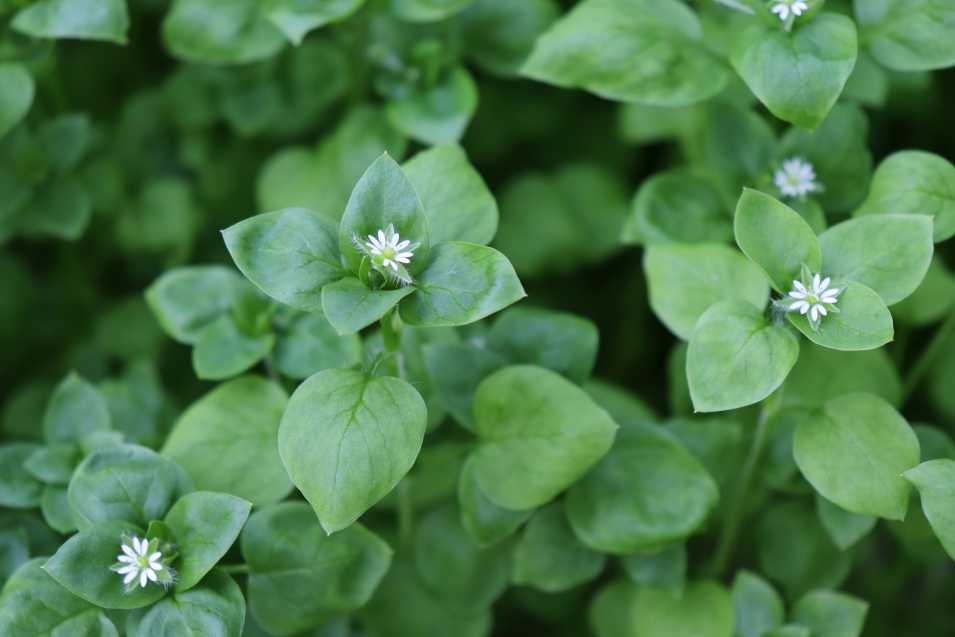Heart-shaped leaves may seem innocuous, even attractive, but some weeds that exhibit this foliar feature can quickly take over your garden if left unchecked Learn to identify the most common heart-leaved garden interlopers, along with tips for controlling them organically and safely
1. Bindweed (Convolvulus arvensis)
Bindweed is a perennial vine with arrowhead-shaped leaves that twines aggressively around garden structures. Its rapid growth allows it to overwhelm and choke out desirable plants. Small white or pink trumpet-shaped flowers bloom in summer.
To control bindweed, thoroughly dig it out, removing all roots. Solarizing the soil can also weaken it. Be diligent, as any bits left behind will resprout. Avoid letting it go to seed.
2. Japanese Morning Glory (Ipomoea nil)
Originally from tropical Asia, Japanese morning glory escapes easily from gardens It has heart-shaped leaves and attractive blue or purple flowers similar to common morning glory However, it’s a vigorous grower that can quickly climb and cover other plants.
Manual removal is effective for small infestations. Pull young plants after rainfall when the soil is loose. controlling established plants takes persistence in continually cutting back growth and digging out roots.
3. Burdock (Arctium minus)
A biennial, burdock produces large rhubarb-like leaves its first year. The second year, flower stalks emerge with clinging burs that hook onto clothing and animal fur, aiding seed dispersal.
Dig up first year burdock plants in early spring before they flower and set seed. Cutting flowers stops seed production in established plants. Cover the site for a few weeks to exhaust the roots.
4. Wild Violet (Viola species)
Wild violets feature rounded, heart-shaped leaves with scalloped edges. The common blue violet (V. sororia) spreads readily in lawns, blanketing areas in purple flowers in spring. Though pretty, it can be aggressive.
Manual removal is effective if done repeatedly over time to exhaust the plant. For large infestations, using a selective weed killer containing triclopyr is an option. Promoting thick turf growth also helps.
5. Clover (Trifolium species)
Clovers, especially white clover (T. repens), thrive in poor lawns, fixing nitrogen as they spread. Their rounded leaves come in sets of three, with cheery white or pink flowers in summer. Though beneficial ecologically, their invasion frustrates homeowners wanting manicured lawns.
To reduce clover, maintain a healthy, dense lawn through proper mowing, fertilization, irrigation and soil pH. Clover-specific herbicides like trimethacarb can also be applied as spot treatments. Avoid weed-and-feed products.
6. Chickweed (Stellaria media)
An annual or overwintering perennial, chickweed forms mats of small green leaves on spreading stems. Tiny white star-shaped flowers bloom early in the season. Chickweed flourishes in cool weather and rich, moist soil.
Pull young plants by hand in early spring before seed sets. Apply corn gluten meal in early spring to inhibit seed germination. Maintain lawn health and avoid over-watering to deter chickweed.
7. Creeping Charlie (Glechoma hederacea)
Creeping Charlie’s round, kidney-shaped leaves with scalloped edges create lush groundcover, but the plant can overwhelm lawns and flower beds. Prolific small bluish-purple flowers bloom in spring. It spreads easily via seeds and creeping stems.
Manual removal can work for light infestations. Repeated mowing several times a season helps, but regrowth is quick. Herbicides containing dicamba or triclopyr offer chemical control. Promote healthy lawn growth to outcompete.
While a few heart-shaped leaves here and there can seem harmless, unchecked growth of these aggressive plants can quickly lead to invading weeds taking over your garden. Get to know their identifying features and habits. Combine manual removal for small outbreaks with monitoring for new growth plus promoting healthy plants to keep your garden in check. Persistence pays off in limiting heart-shaped garden weeds.
Easily Identify Weeds in Your Yard in SECONDS
FAQ
What invasive vines have heart-shaped leaves?
What outdoor plant has heart-shaped leaves?
What is a trailing vine with heart-shaped leaves?

